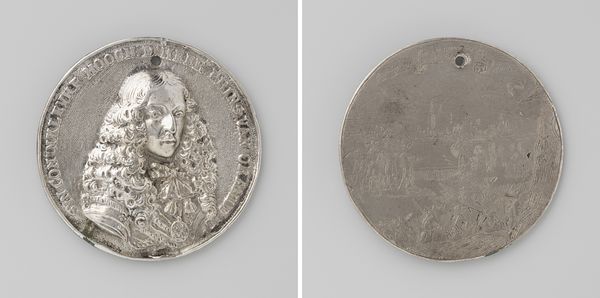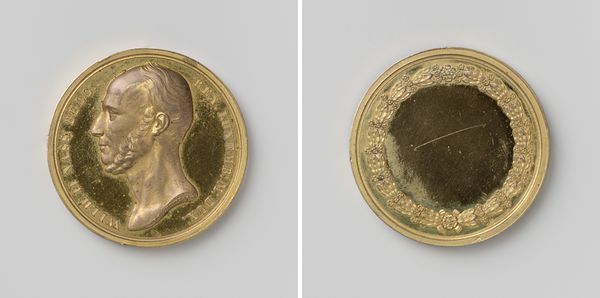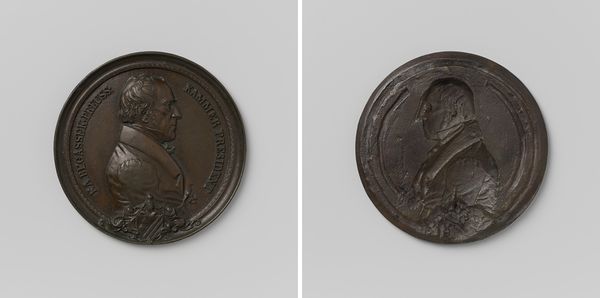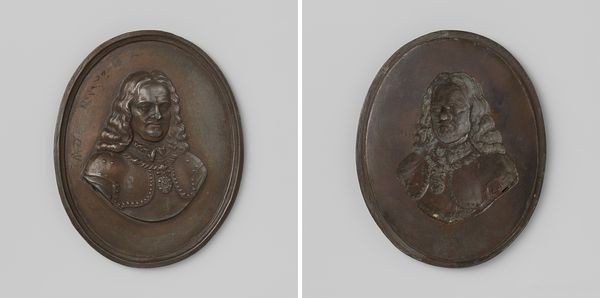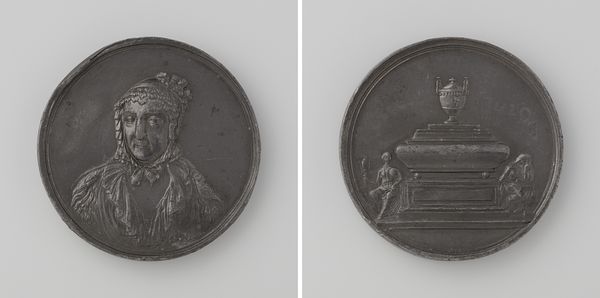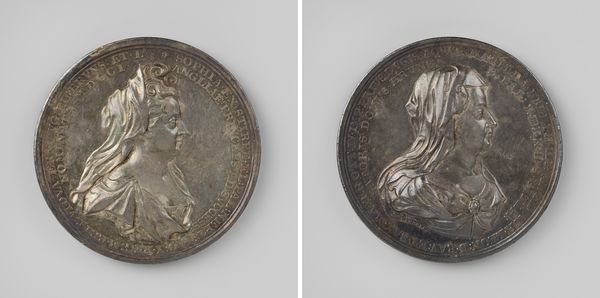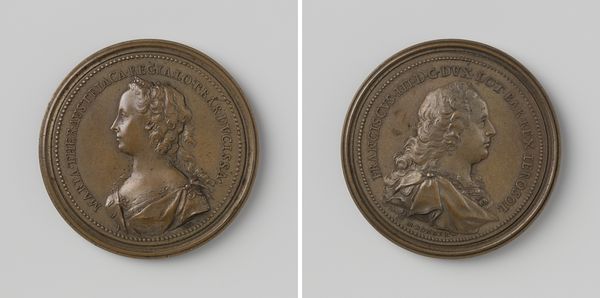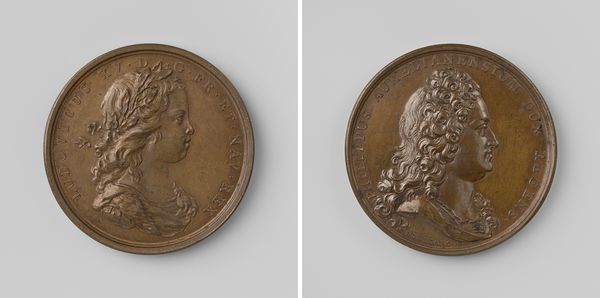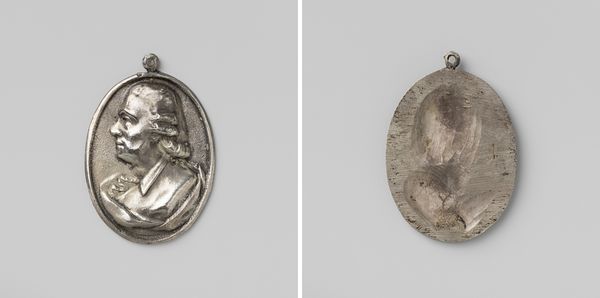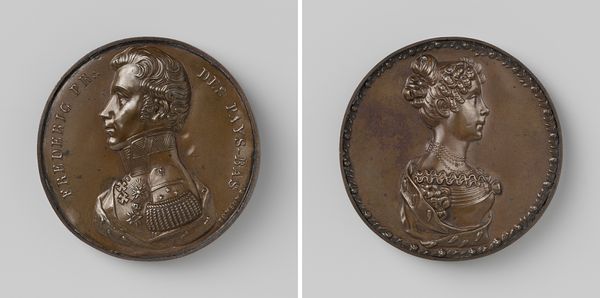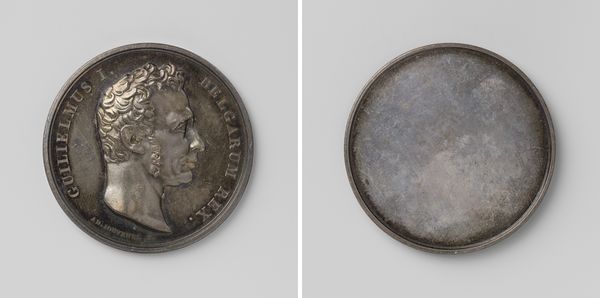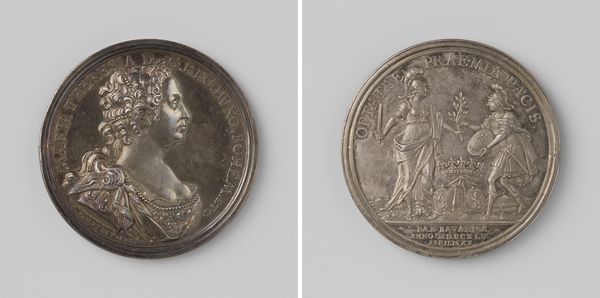
metal, sculpture
#
portrait
#
baroque
#
metal
#
sculpture
#
sculpture
#
history-painting
Dimensions: length 11.2 cm, width 9.1 cm, weight 43.58 gr
Copyright: Rijks Museum: Open Domain
Curator: Welcome, everyone. Before us is a pair of metal sculptures by Gerrit van Moelingen, created between 1748 and 1751. The pieces are portraits of Willem IV, Prince of Orange-Nassau. Editor: My immediate reaction is how austere the pieces appear! The use of metal contributes to a striking tonal range and gives a sense of imposing strength, but the composition in these ovals is quite straightforward, very controlled. Curator: The Baroque style would have resonated with the expectations of power and status, as did portraits more generally. Willem IV's image was deliberately circulated to solidify his rule and project an image of authority to the Dutch populace. Editor: From a formal perspective, the light reflecting off the metal accentuates the relief. Look at how meticulously rendered the prince's attire is—the way the lines of his vest are captured; this detailing lends visual complexity, a nice foil to his expressionless visage. Curator: Absolutely. These medallions aren't just decorative objects. They participated in shaping and disseminating a particular view of leadership during a critical period of Dutch history. The House of Orange's legitimacy was always up for debate. Editor: I do wish there were a greater degree of surface variation on the prince's face, in particular. It almost seems idealized in some regards. But perhaps that uniformity itself functions semiotically, to reinforce the notion of calm, unflappable governance? Curator: I suspect these portraits were gifts for the courtly elite, serving as tangible symbols of loyalty. Think of them as early forms of political merchandise. Van Moelingen ensured their appeal and preserved the desired iconography for his audience. Editor: I’ll concede there's something compelling about the scale. Despite the relatively small format, the sculptures emanate importance and seriousness. A testament to the material's enduring association with prestige. Curator: Considering how such objects functioned within political society allows for us to expand our reading of courtly politics. What did it mean to display Willem's image? How did this change after his unexpected death soon after? So many avenues to investigate! Editor: Well, I have enjoyed the chance to reflect on how form can serve larger purposes of image-crafting! I'll now keep a close eye on relief-based works for how political symbolism informs their composition.
Comments
No comments
Be the first to comment and join the conversation on the ultimate creative platform.
